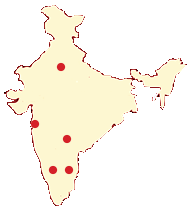Overview
What is R F Ablation ?
The effects of radiofrequency ablation in people with small metastatic lung tumours that could not be treated with surgery, radiotherapy or chemotherapy. The technique involves inserting a small probe into the tumour and using a radiofrequency energy to generate heat and kill the surrounding tumour tissue. The results in this “hard to treat” population are promising: the study shows that it is technically possible to use this technique for lung cancer, that a high proportion of tumours treated in this way respond for one year, and that the procedure is relatively safe. The next stage will be to carry out a randomised controlled trial to look at whether this treatment improves survival compared with non-surgical techniques

Radio frequency ablation (RFA) is a medical procedure where part of the electrical conduction system of the heart, tumor or other dysfunctional tissue is ablated using high frequency alternating current to treat a medical disorder. An important advantage of RF current (over previously used low frequency AC or pulses of DC) is that it does not directly stimulate nerves or heart muscle and can therefore often be used without the need for general anaesthetic.
RFA has become increasingly accepted in the last 15 years with promising results [1] [2]. RFA procedures are performed under image guidance (such as X-ray screening, CT scan or ultrasound) by an interventional radiologist or a cardiac electrophysiologist, a subspecialty of cardiologists.
Which Conditions Are Treated With Radiofrequency Ablation ?
RFA can be used to help patients with chronic (long-lasting) low-back and neck pain and pain related to the degeneration of joints from arthritis.
How Long Does Pain Relief From Radiofrequency Ablation Last ?
The degree of pain relief varies, depending on the cause and location of the pain. Pain relief from RFA can last from six to 12 months and in some cases, relief can last for years. More than 70% of patients treated with RFA experience pain relief. Is Radiofrequency Ablation Safe?

RFA has proven to be a safe and effective way to treat some forms of pain. It also is generally well-tolerated, with very few associated complications. There is a slight risk of infection and bleeding at the insertion site. Your doctor can advise you about your particular risk. What Are the Side Effects of Radiofrequency Ablation?
The main side effect of RFA is some discomfort, including swelling and bruising, at the site of the treatment, but this generally goes away after a few days. Who Should Not Get Radiofrequency Ablation?
As with any medical procedure, RFA is not appropriate for everyone. For example, radiofrequency ablation is not recommended in people who have active infections or bleeding problems. Your doctor can tell you if you should not have RFA.
How Do I Prepare for Radiofrequency Ablation ?
To prepare for radiofrequency ablation treatment, you should take a few precautions, including:
 Do not eat within six hours of your appointment. You may have clear liquids until two hours before the procedure.
Do not eat within six hours of your appointment. You may have clear liquids until two hours before the procedure. If you have diabetes and use insulin, you must adjust the dosage of insulin the day of the procedure. Your primary care doctor will help you with this adjustment. Bring your diabetes medication with you so you can take it after the procedure.
If you have diabetes and use insulin, you must adjust the dosage of insulin the day of the procedure. Your primary care doctor will help you with this adjustment. Bring your diabetes medication with you so you can take it after the procedure. Continue to take all other medications with a small sip of water. Bring all medication with you so you can take it after the procedure. Please note: Do not discontinue any medication without first consulting with your primary or referring doctor.
Continue to take all other medications with a small sip of water. Bring all medication with you so you can take it after the procedure. Please note: Do not discontinue any medication without first consulting with your primary or referring doctor. You will need to bring someone with you to drive you home after the procedure. You should not drive or operate machinery for at least 24 hours after the procedure.
You will need to bring someone with you to drive you home after the procedure. You should not drive or operate machinery for at least 24 hours after the procedure.
What Happens During Radiofrequency Ablation?
You will meet with a doctor for an evaluation. If a radiofrequency ablation is recommended, a doctor will explain the procedure in detail, including possible complications and side effects.
The doctor will also answer any questions you may have.
An intravenous (IV) line may be placed in a vein in your arm before the procedure and a local anesthetic and mild sedative may be used to reduce any discomfort during RFA. You will be awake during the process to aid in properly assessing the procedure.
After the local anesthesia (you will be awake but will not feel any pain) has been administered, your doctor will insert a small needle into the general area where you are experiencing pain. Using X-ray, your doctor will guide the needle to the exact target area. A microelectrode is then inserted through the needle to begin the stimulation process.
During the procedure, your doctor will ask you if you are able to feel a tingling sensation. The object of the stimulation process is to help your doctor determine if the electrode is in the optimal area for treatment.
Once the needle and electrode placement are verified, a small radiofrequency current is sent through the electrode into the surrounding tissue, causing the tissue to heat. You should not feel discomfort during the heating portion of the procedure
What Happens After Radiofrequency Ablation?
Following the procedure:
 You will stay in a recovery room for observation, where a nurse will check your blood pressure and pulse.
You will stay in a recovery room for observation, where a nurse will check your blood pressure and pulse. A bandage will be placed over the injection site.
A bandage will be placed over the injection site. The nurse will give you a beverage and review your discharge instructions with you.
The nurse will give you a beverage and review your discharge instructions with you. Someone must drive you home.
Someone must drive you home.
Can I Resume My Normal Activities After Radiofrequency Ablation?
You will have a few restrictions immediately following the procedure:
 Do not drive or operate machinery for at least 24 hours after the procedure.
Do not drive or operate machinery for at least 24 hours after the procedure. You may resume your normal diet.
You may resume your normal diet. Do not engage in any strenuous activity for the first 24 hours after the procedure.
Do not engage in any strenuous activity for the first 24 hours after the procedure. Do not take a bath for 1 to 2 days after the procedure; you may shower.
Do not take a bath for 1 to 2 days after the procedure; you may shower. You may remove any bandages in the evening before going to bed.
You may remove any bandages in the evening before going to bed.
For more information, medical assessment and medical quote
as email attachment to
Email : - info@wecareindia.com
Contact Center Tel. (+91) 9029304141 (10 am. To 8 pm. IST)
(Only for international patients seeking treatment in India)










